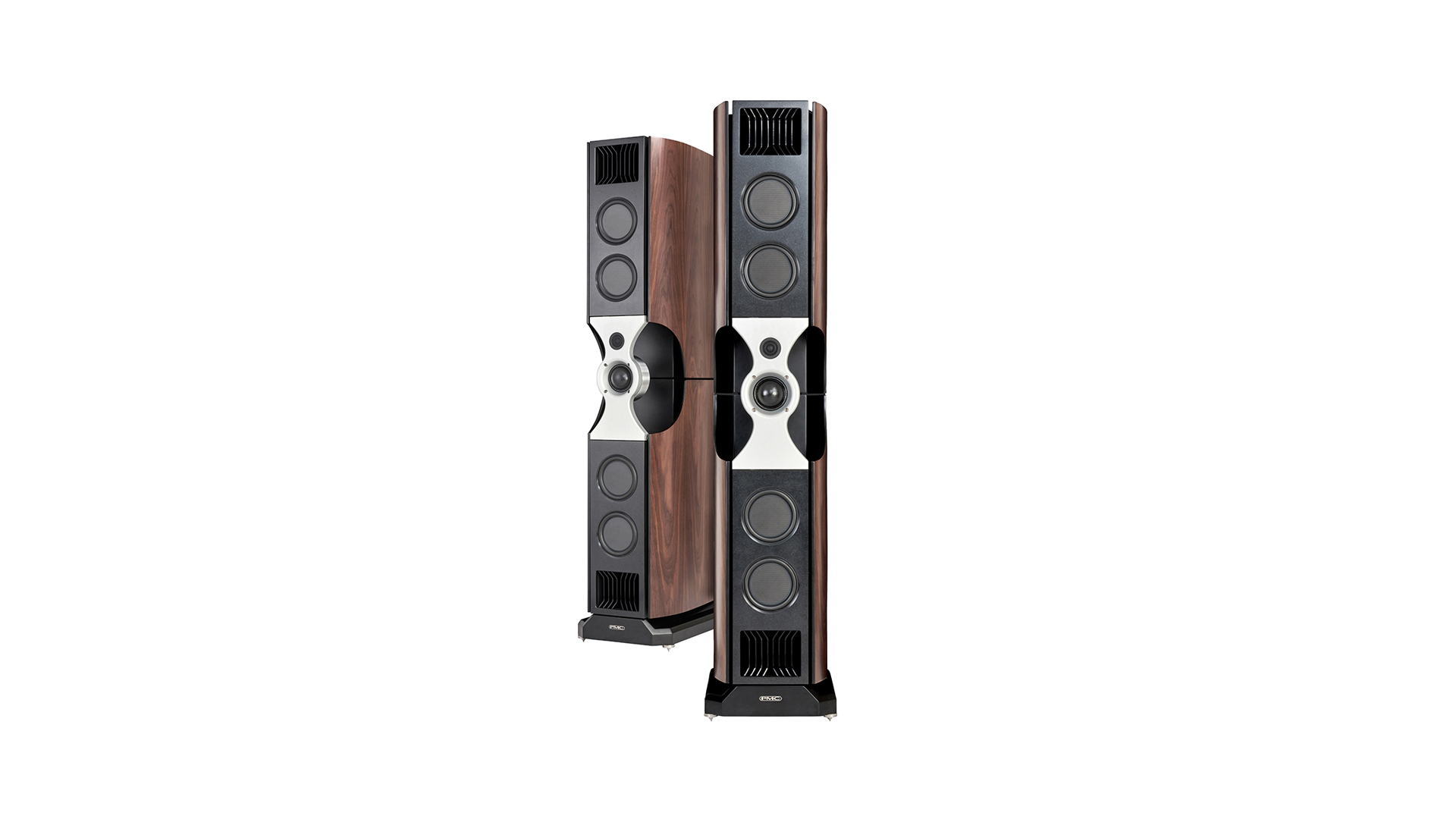What Hi-Fi? Verdict
The PMC Fact Fenestrias are without doubt one of the finest speakers we’ve heard.
Pros
- +
Effortless insight into recordings
- +
Astonishing dynamic ability
- +
Agile and powerful bass
- +
Excellent build
Cons
- -
Extremely expensive
Why you can trust What Hi-Fi?
We like shoot-for-the-stars products. It’s always fascinating to see what a company can do when the sole concern is maximising sound quality. This is what the range-topping Fact Fenestrias represent for PMC – an opportunity to take a fresh look at every part of loudspeaker design and come up with engineering solutions that are as free from budget constraints as they can be.
Build
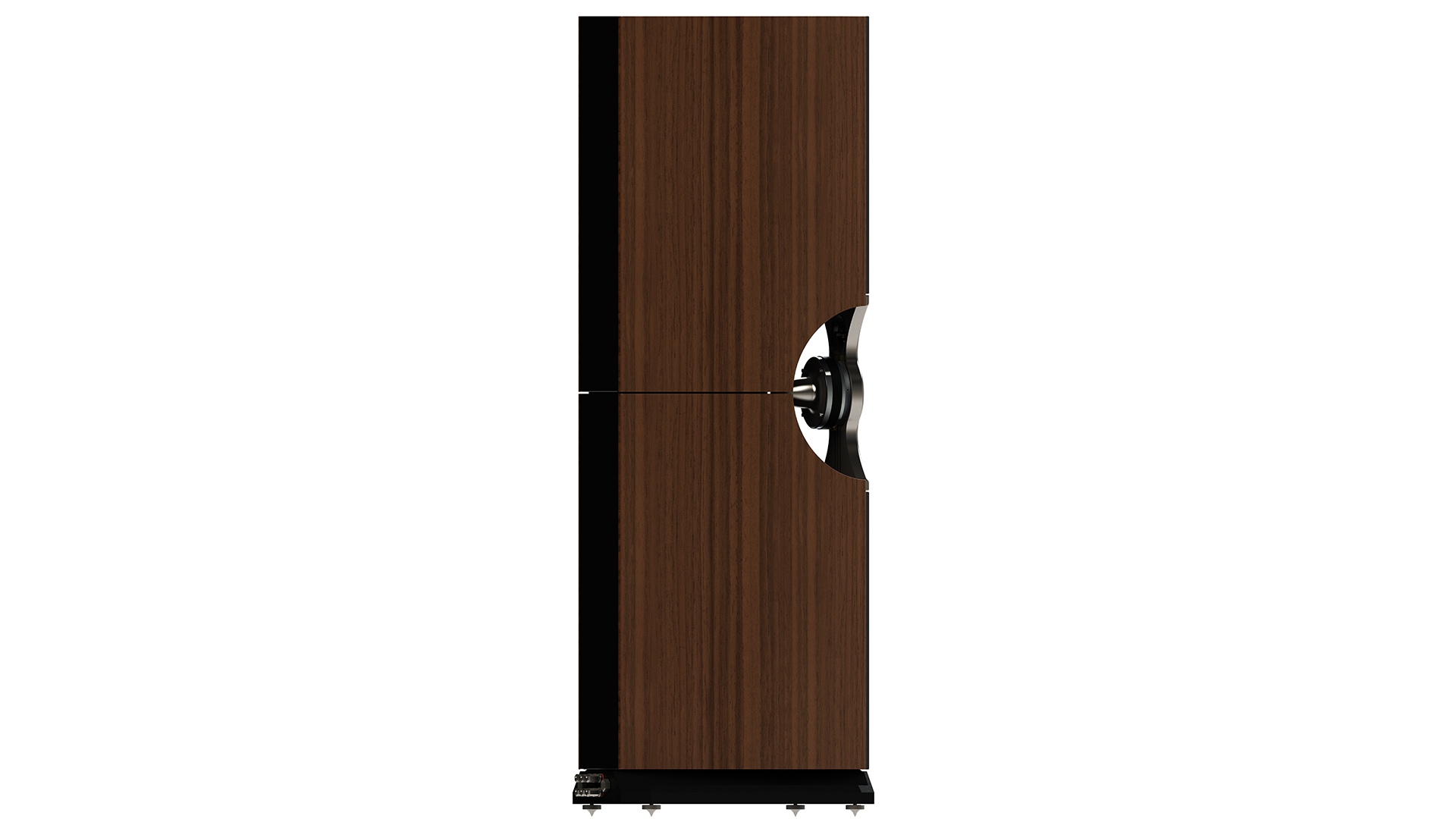
PMC has long had firm beliefs on all aspects of speaker design and so was always unlikely to follow a totally different engineering path just because there’s more money to spend. The Fact Fenestrias still use a wooden cabinet for example, though PMC has been highly imaginative in the way it has gone about reducing cabinet resonances, but more on that later.
It’s also no surprise to find the use of a transmission line to tune the speakers’ low frequency output either, as the company has long promoted the use of this type of arrangement. Why? The claim is that it gives lower distortion and more powerful bass for a given cabinet size compared to the usual reflex port configuration.
What’s a transmission line? The bass unit’s rear-firing sound is channelled through a carefully damped folding path within the speaker cabinet until only the lowest frequencies remain. These exit through an opening in the cabinet to augment the forward-firing bass sounds from the driver. The type and amount of damping are critical to getting the transmission line to work properly, as is getting the length just right. PMC has been designing these for decades and so has plenty of experience in optimising the results.
The Fenestria has two transmission lines, both 2.4m in length; one for each pair of the four flat 16.5cm damped carbon fibre bass drivers. Great care has been taken to manage the airflow out of the transmission line in order to minimise turbulence and drag. The result is less noise and increased efficiency.
The rest of the drive unit complement is highly developed but relatively conventional. There’s a development of PMC’s capable 75mm dome midrange (with its rear chamber to absorb any unwanted sound coming off the back of the diaphragm) and a 19.5mm Sonomex dome tweeter (with an unusually large 36mm wide surround) that uses a powerful Neodymium magnet assembly. Even the tweeter’s grille is shaped to aid the unit’s dispersion characteristics.
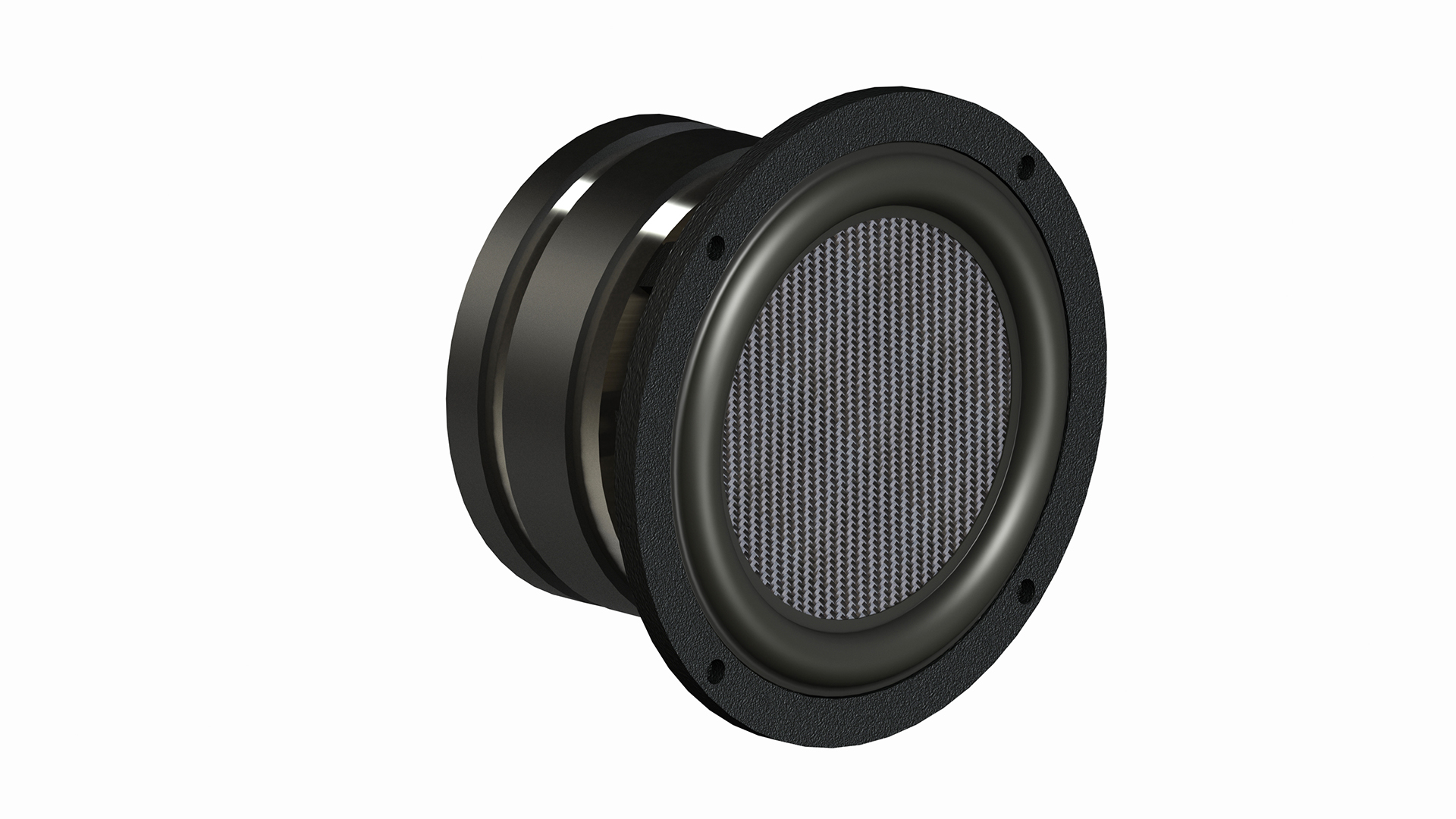
While these drivers are impressive enough, it’s the way they’ve been implemented into the Fenestria’s structure that’s even more interesting. They are both attached to a small, heavily shaped aluminium baffle that’s decoupled from the main speaker body to isolate both higher-frequency drivers from the vibrations generated by that quartet of bass units. Not only that, the tweeter itself is additionally decoupled from that aluminium baffle by a dedicated suspension system designed to minimise any unwanted mechanical energy from the dome midrange affecting the high frequency driver’s output.
The latest hi-fi, home cinema and tech news, reviews, buying advice and deals, direct to your inbox.
The Fenestria’s array of drive units are linked with a three-way crossover that’s housed in the plinth of the speakers, and mounted compliantly to, you’ve guessed it, reduce the amount of mechanical vibrations fed into the circuit. The crossover points are set at 380Hz and 3.8kHz, which are fairly conventional values. Take a look at the fourth order, 24dB/octave network and you’ll spot that it’s populated by some of the best components available from brands such as Mundorf and Clarity Cap. Even the speaker binding posts are unusual, being bespoke and made of copper and plated with Rhodium for good long term conductivity.
Look around the back and you’ll find three sets of speaker terminals to allow tri-wiring (if you want) and also two dials to adjust bass and treble outputs. These two controls offer subtle tweaks rather than large changes of character and are useful to optimise the speaker’s balance in a listening room.
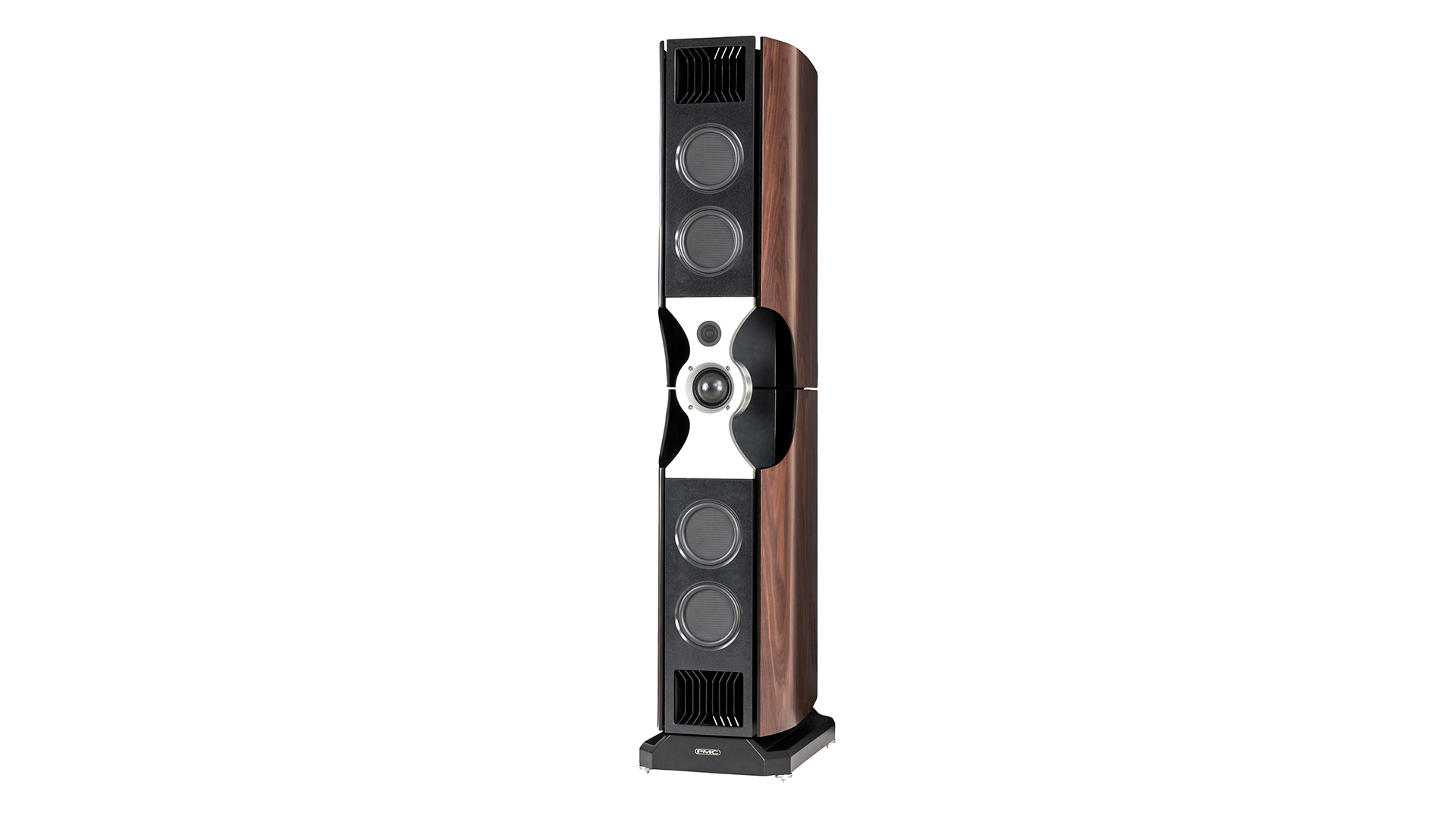
Crossover Frequency 3.8kHz & 380Hz
Dimensions including binding posts (hwd) 1700 x 370 x 623mm (66.9 x 14.6 x 24.5-inches)
Drive Units LF – 165mm transverse-weave, carbon-fibre, multicellular-core piston driver; MF – 75mm rear-chambered, soft-dome driver isolated in nest mount; HF –19.5mm, SONOMEX™ soft-dome, ferro-fluid-cooled driver with 36mm wide surround, neodymium magnet, micro custom chassis, silicone Aureole™ isolation mount
Frequency Response 23Hz-25kHz
Impedance 4 Ohms
Sensitivity 86dB @ 1W, 1m
Weight 80kg (each)
One of the Fenestria’s technology highlights has to be the main cabinet design. PMC has adopted a technique used for controlling the swaying motion in skyscrapers (caused by earthquakes or high winds) and applied that to the cabinet sides.
This takes the form of compliantly-mounted panels on each side of the cabinet, which stand proud of the actual speaker box, and are tuned to resonate so as to oppose the vibration generated by the cabinet’s side panels. It’s a clever solution that avoids the excessive mass of most high-end cabinet designs and the huge cost and resonance issues of using metal. It must be obvious by now that the control of resonances is a theme that runs throughout every aspect of the Fenestria’s design.
At 1.7 metres tall these PMCs are huge speakers, but won’t look overbearing in most rooms thanks to the slim proportion of the front panel. They’re a modular design that has to be assembled, with each pair of bass drivers in separate boxes that lock together, with the midrange/tweeter array fitting on later.
The overall standards of build are as good as we would expect at this level, and there is a choice of three finishes: Tiger Ebony, Rich Walnut, White Silk. Such is PMC’s confidence in these speakers that it offers an impressive 20 year warranty on the product.
We would leave initial assembly to the dealer, as well as the optimisation of the positioning. At 80kg for each cabinet these aren’t so easy to move around and it takes a certain amount of experience to properly optimise the sound, even if the Fenestrias are well-behaved and fairly unfussy by high-end standards.
We end up with them placed around a metre out from the rear wall and well away from the sides to make the most of the speaker’s expansive stereo imaging. Our test room is reasonably-sized at 5 x 7m, with a 3m high ceiling, but even then we feel the need to knock back the Fenestria’s bass output just a notch – using that rear panel control to avoid the lows being overstated. A bit of angle towards the listening position helps to firm up the stereo focus.
Compatibility
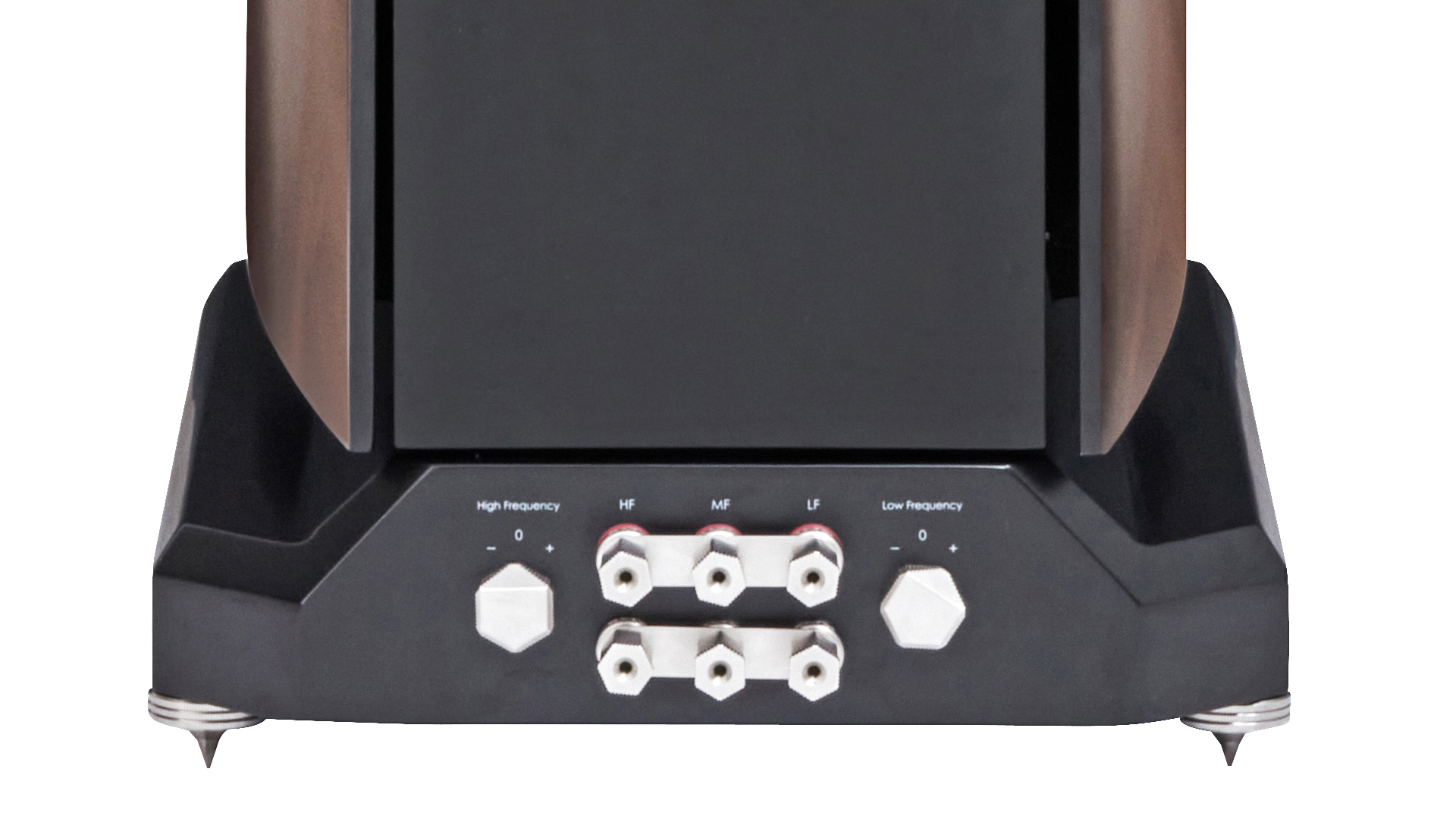
No one should consider a pair of speakers at this level without having a top class system in place. Our sources are Naim’s ND555/555 PS DR and Linn’s Klimax DSM music streamers with the Technics SL-1000R turntable providing an able analogue back-up. Our main amplification is the usual Burmester 088/911 MkIII pre/power combination, but PMC were also kind enough to leave a pair of 600-watt Bryston 7B Cubed monoblocs to enable us to push the speakers harder, if needed. All cables are upmarket offerings from Chord Cables and Vertere Acoustics.
Those who know PMC’s products will be relieved to know that the company hasn’t forsaken its traditionally even-handed approach to sound quality. The Fenestrias presentation isn’t hyped in any obvious way in a bid to justify that high price tag. No, what these speakers do is far more interesting than that. They sound natural and subtle, displaying a degree of finesse that’s extremely rare, even in leading-edge speakers. PMC’s aim for these floorstanders is to deliver the music signal as faithfully as possible, reducing any speaker generated distortions to a minimum. That’s why so much work was done to reduce the influence of cabinet resonances and the unwanted effects of vibrational interactions between the drive units.
Sound
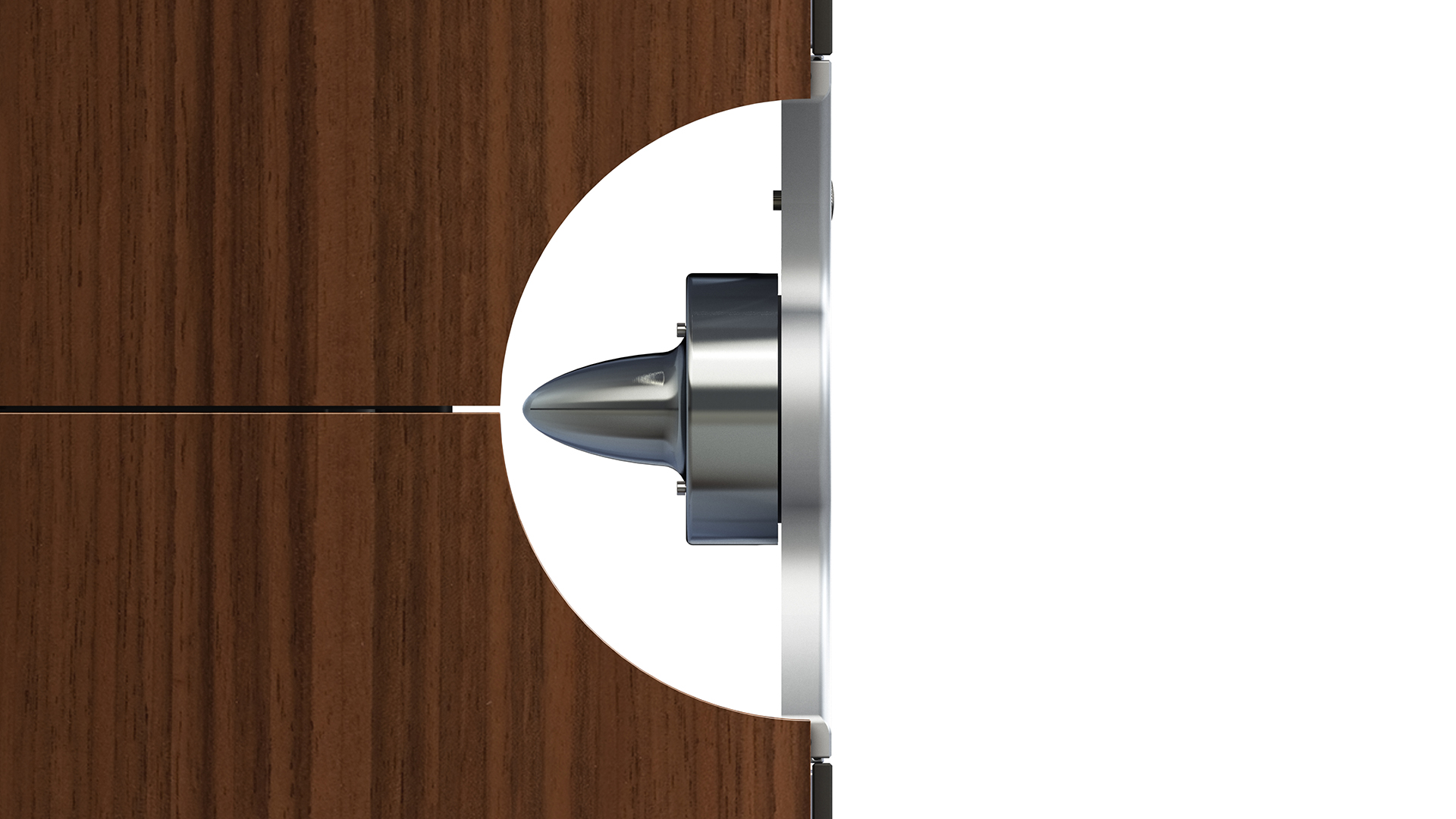
All that work has clearly paid off. The Fenestrias are wonderfully transparent towers that deliver the sound with an impartiality that’s deeply impressive. By impartiality we’re not just talking about basics such as tonal balance (which is pleasingly even from the lowest bass upwards), but the way these speakers handle all genres of music without favouritism. They can rock-out to Nirvana’s Nevermind, punching out Come As You Are with all the attitude and attack intact while still having the composure to present Dvorak’s New World Symphony with the precision, verve and scale it deserves.
They image superbly for such large boxes – thanks no doubt to the well controlled cabinet resonances – delivering a huge and expansive presentation that still has instruments and other sounds locked solidly in place. These PMCs dig up so much in the way of low-level detail that it's easy to hear the acoustic clues that describe the scale and characteristics of the recording venue, making it a breeze to place the orchestra within that space.
These floorstanders are astoundingly good in the way they render dynamic shifts too. Forceful crescendos are rendered with conviction, which is no surprise given the price level. More impressive and unusual is the way the Fenestrias handle the nuances, the slight changes in intensity that communicate, say, the emotion in a voice or change in emphasis in the way a piano key is played. This is brought home when we listen to Beethoven’s Moonlight Sonata and find it comes through with a level of authenticity that’s rare in hi-fi. We can’t recall testing another speaker that reproduces the harmonically rich sound of a full-size piano with such realistic dynamic expression and accurate sense of scale. There’s an authority in the Fenestria’s presentation that’s hugely appealing.

Wanting to push these speakers hard with something of a different genre, we decide to play Massive Attack’s Angel at what can only be described as ‘party levels’. These PMCs tackle it with almost contemptuous ease. There’s no sign of strain or any undue harshness that suggests that the speakers are having to work hard. The song’s subterranean basslines come through with excellent clarity and texture. These towers sound mighty deep and powerful, of course. Given the size of the speakers and that array of low frequency drivers anything else wouldn’t be acceptable, but the ability to render different textures of bass sounds is rare and frankly, astonishing.
Despite relatively conventional specifications for sensitivity (86dB/W/m) and a 4 ohm nominal impedance, these are speakers that positively demand that your power amplifier has plenty of grunt. Our Burmester 911 Mk III is hardly puny at a rated 180 watts per channel but there was no mistaking the increased low-end grip and improvement in large scale dynamic shifts when we substitute that pair of 600 watt Bryston 7B Cubed monoblocs in its place. Equally, there’s no denying the Burmester 911 Mk III’s greater mastery of dynamic nuance, tonal texture and musical cohesion. These PMCs are explicit enough to make the sonic differences between these hugely-capable power amplifiers blindingly obvious, such is their insight and resolution.
Verdict
Some people will never be able to look past the Fenestria’s massive price, and we can understand that. But, equally, there is no denying the excellence of their performance, if fed with a system of suitable quality and character. Overall, it’s hard to come to any other conclusion than that these speakers richly deserve a prominent position amongst the very best speakers we’ve ever tested. There’s no higher compliment than that.
SCORES
- Sound 5
- Build 5
- Compatibility 5
MORE:
Want something more affordable? Here are the best floorstanding speakers
The best speakers of What Hi-Fi?'s lifetime
8 of the best classical music tracks for testing speakers
How to build the perfect hi-fi system
What Hi-Fi?, founded in 1976, is the world's leading independent guide to buying and owning hi-fi and home entertainment products. Our comprehensive tests help you buy the very best for your money, with our advice sections giving you step-by-step information on how to get even more from your music and movies. Everything is tested by our dedicated team of in-house reviewers in our custom-built test rooms in London, Reading and Bath. Our coveted five-star rating and Awards are recognised all over the world as the ultimate seal of approval, so you can buy with absolute confidence.
